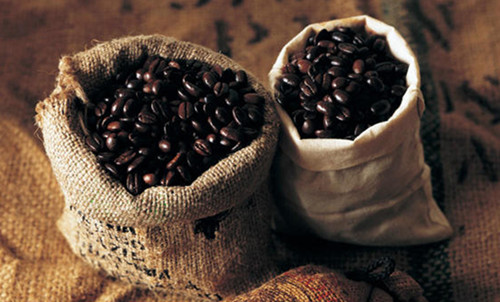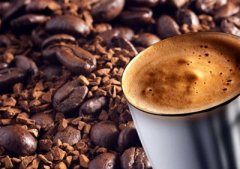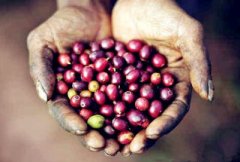You know, latte is not coffee, but milk! Latte coffee Italian beef
In Italian latte means milk, and since the customer ordered latte, the shopkeeper had to serve the milk to the customer. As for the popular term latte, it is short for latte, and the Italian full name should be caffe latte or caffe con latte.
The friend and her good colleague returned to Italy for the first time, because they followed the tour group, and all the way there was nothing but getting on and sleeping, getting off and taking photos, and walking around. In fact, it was all expected that they would travel in such a hurry. Seeing that they did not understand the language and the cost was relatively low, they fully cooperated with the arranged itinerary. They were very quiet and did not complain too much.

After waiting for an afternoon of free time, the two ladies were not in a hurry to buy fashionable clothes or designer bags, but went straight to a coffee shop that seemed to be mostly frequented by locals. " You can buy clothes and bags anywhere. It's not easy to come to Italy. If you don't have a cup of authentic Italian coffee, wouldn't you have wasted your trip?" Friends naturally say that she likes to sit in cafes in Taipei on weekdays, and can go several times a week. I love coffee, too, and I love the relaxed atmosphere of coffee shops, so I can understand why they are willing to give up a great opportunity to "shop".
"Because it was cold and our stomachs were a little empty, we sat down and ordered two lattes, thinking more latte milk and less coffee would hurt our stomachs. Instead, two glasses of hot milk were served, and we waved our hands and said, No,no,latte,latte. The waiter kept nodding, Si,si,latte,latte." She stopped and looked at me, who was already laughing because she knew a little Italian.
The waiter was not mistaken. In Italian, latte means milk. Since the customer ordered latte, the shopkeeper had to serve the milk to the customer. As for what my friends call latte, it's short for latte, and in Italian its full name should be caffelatte or caffeconlatte.
"What happened next?" I stifled laughter.
"I used three-legged cat English, and I made gestures. The waiter seemed to finally understand. He made a gesture and said something loudly. He took the milk away. After a while, he brought two more glasses." The friend recounted the scene,"He placed the cappuccino in a glass on the table and said, Miss, coffee latte, coffee and milk." Yo, the last two words are in English. Everyone in the shop, whether standing at the coffee bar or sitting in their seats, looks at us two Orientals with a smile. It's embarrassing."
It's no wonder my friend laughed like this, because in Taipei, you walk into a shop that advertises Italian coffee, order a latte, and the one delivered to you will definitely be a large latte with a lot of hot milk and milky white foam. This is mainly because Taiwan's "Italian coffee shops", whether self-employed or chain stores, are mostly not inherited from Italy, but copied from the United States, selling the "American Italian coffee" that rose in Seattle. At the same time, they also learned the old American love to "Americanize" foreign things, and followed others to omit the word "coffee" in latte coffee and call caffelatte latte.
Frankly speaking, the "mistake" that her friend made on her trip to the Italian coffee shop was not just the language. She simply "ordered" the wrong thing. In Italy, cappuccino or latte is generally only drunk before 10:30 or 11 a.m. A cup of coffee laced with milk and a croissant, or cornetto, is a standard Italian breakfast.
Most Italians stop drinking cappuccino after breakfast, and definitely not after dinner, when they stress espresso. Italians believe that drinking a strong espresso after a meal can help digestion.
I'm not sure espresso really helps digestion, but there's a reason not to drink cappuccino or latte after dinner. After all, it's too greasy to drink creamy coffee after stuffing yourself with pasta, cheese and fish or meat staples.
Coffee lovers under travel back to Italy, if in the afternoon on the cafe, there are two options. One is to do as the Romans do, order an espresso, learn Italian best, not sit down, but stand at the bar, drink a small cup of coffee in two sips, and revel in the situation as if he were a local.
Another option is to ignore what people think and take advantage of tourist privileges. On an afternoon when you are a little hungry but not too hungry, you can order a large latte generously and sit down and enjoy it comfortably. Just make it clear whether you want latte or caffelatte.
Important Notice :
前街咖啡 FrontStreet Coffee has moved to new addredd:
FrontStreet Coffee Address: 315,Donghua East Road,GuangZhou
Tel:020 38364473
- Prev

African Coffee Story: the oldest way to drink Coffee Culture in Ethiopia
Ethiopians still maintain a lot of coffee traditions. They are not used to picking fruit from trees, and more often they collect ripe and fallen fruit under the coffee tree, which damages the quality of the coffee somewhat. They have always used the traditional sun method to treat coffee beans, but rarely use water washing method, which makes the coffee beans absorb more of the aroma of the pulp, so the fruit flavor is better.
- Next

What is the difference between the distribution location of individual coffee and different kinds of coffee in different producing areas?
Individual coffee is made from a single coffee bean produced in the country of origin and is a pure coffee without milk or sugar when drinking. Have strong characteristics, special taste: or fresh and soft, or mellow smooth; the cost is higher, so the price is more expensive. For example, the famous Blue Mountain Coffee, Brazilian Coffee and Colombian Coffee are all named after the origin of coffee beans. Mocha Coffee
Related
- Is espresso stored overnight in the refrigerator harmful to your body? Is frozen coffee better than freshly ground coffee?
- What parameters and proportions of water temperature should be used to grind and brew fresh coffee beans? Why can't I drink freshly roasted coffee right away?
- Customers have "changed" Manner's new products! Shop assistant: Please don't mess around!
- Remove sockets in customer areas at Starbucks stores?! Netizen: I won't go if I really tear it down
- What is the difference between the taste steps of sun-dried coffee and washed coffee? Why is sun-cured coffee sweeter and washed coffee sour?
- The recipe for salty grapefruit dirty is revealed! Coffee Festival salty grapefruit dirty coffee making materials parameters ratio milk share!
- How about the flavor of Sunlight 74158 at Sidamo Banshaha Mathieu Processing Factory in Ethiopia? 74158 Share the proportion of coffee brewing parameters!
- What effect does Italian American coffee with filter paper have? Will coffee taste better if it is put on filter paper at the bottom of the powder bowl?
- What is the color difference in coffee beans? What are the characteristics of honey processed coffee beans? Why are the anaerobically treated coffee beans uneven in color?
- How does novice Xiaobai quickly get started and make coffee? Newbies learn to make coffee by hand and share the specific steps and process process!

